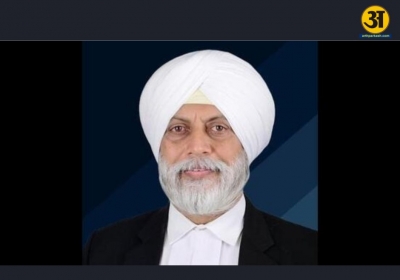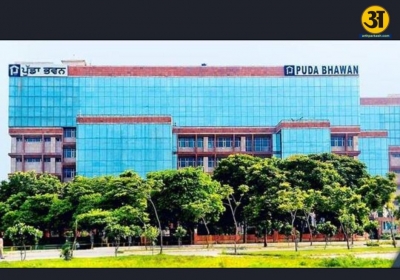
The global market sell-off India's largest IPO
The global market sell-off raises the stakes for India's largest IPO
India is moving ahead with the country's largest initial public offering, a massive undertaking made much more difficult by inflationary concerns and a challenging global trading environment.
Prime Minister Narendra Modi's government intends to sell a 5% interest in Life Insurance Corporation of India in order to raise $7.96 billion to help close a budget deficit. Even at a scaled-down version of its original blueprint, which at one point targeted for more than $10 billion, the offering could be difficult to sell.
Touchdown The listing, which is set to take place next month, will examine the country's capital markets at a time when global shares have lost almost $5 trillion. Domestically, the situation is tumultuous: foreign funds have been pulling money out of Indian stocks for more than four months, and local traders are still smarting from losses on a high-profile IPO last year.
"LIC is an excellent IPO," said Basant Maheshwari, co-founder of Basant Maheshwari Wealth Advisers LLP. "However, it may not be the right time for it."
For LIC's itemising, there is an overwhelming amount of anticipation. The IPO has been dubbed "India's Aramco second" by some bankers, referring to the Gulf oil giant's $29.4 billion IPO in 2019 - the world's largest. The sale of a 65-year-old insurer, which is generally pushed into duty to rescue banks and faltering public assets, has been stalled from the start.
Since finance minister Nirmala Sitharaman announced the project in 2020, the IPO has been postponed by a couple of years. And, like with Aramco's listing, India would require lengthy commitments from anchor dealers, who will raise a third of the total funds.
Tens of millions of retail traders might be given an extra 35 percent depending on the anticipated valuation. That's a tough ask, especially when you consider Paytm's performance last year, when it managed to oversell its retail e-book by 1.7 times, compared to a 2.8 times over-subscription for its institutional traders. By comparison, LIC's retail e-book may be 12 times larger.
According to people familiar with the situation, the country's latest goalpost is on the lower end of previous IPO forecasts. According to the sources, the federal government planned to increase the itemising by $5 billion to $13 billion last month. Officers, though, dialled back their goals as the euphoria faded and world markets began to sway.
It will take some finesse to persuade deep-pocketed foreign traders of LIC's financial worth, according to people familiar with the discussions. For many, LIC is a dark box: its balance sheet is only made public once a year.
LIC's $8 billion IPO is over half of the total amount raised from IPOs last year. With such a large swing, the more than 40 companies that have filed intentions for share sales in 2022 may find it difficult to compete.
In general, markets have dropped sharply in recent weeks after raising a record $18 billion in share sales in 2021. This month, the government cut its asset-sale target for the year to 780 billion rupees ($10.4 billion), less than half of its previous target of 1.75 trillion rupees.
There are always silver linings.
To get through a difficult market, LIC is counting on its 1.3 million brokers and more than 250 million policyholders.
Last year, retail investors created a record number of new demat accounts, bringing the total number of equity traders to 81 million, a large enough number for the IPO to succeed. A strong itemization might provide a boost at a time when the country is still recovering from a wave of omicron infections and lockdowns.
In an interview with Bloomberg, Tom Masi, co-portfolio manager of emerging wealth strategy at US-based GW&Ok Funding Administration, said, "It is critically important for India to press further on itemising LIC." "This IPO will provide information to the federal government on the actions it should take to become a viable global monetary market with international traders."
Most retail involvement in LIC is a critical indicator for fulfilment for Modi, who is focused on elections in India's bellwether state this month. The federal government has agreed to pay retail traders a 0.35 percent brokerage fee on allotment. It has also set aside up to 10% of shares for LIC policyholders and should be able to offer the shares at a discount.
"It has to be priced in a way that people can benefit from it," Maheshwari said. "If only the issuer gets money, the IPO's long-term effects could be negative."
Finally, according to Mark Matthews, the head of Asia analysis at Julius Baer & Co., the IPO may bring greater responsibility and transparency to the stock market. "When China Life, the largest Chinese language insurance company, went public in 2004, its shares soared in tandem with the rest of the market," he said.
And, as finance options in China dry up, the IPO may provide the ideal opportunity for large international funds to park their money in India – a country that has trailed behind other major countries for a few years.
In a joint e-mail with Nuno Fernandes, another portfolio supervisor, Masi of GW&Ok wrote, "We don't at the moment imagine that any other equity market offers the funding option that India offers inside the subsequent 20 years." "Favorable demographics, a large population base, low per-capita earnings, and forward-thinking financial reforms are underway."
Also read : In a single day, six crypto coins have risen by a total of 2,072 percent





